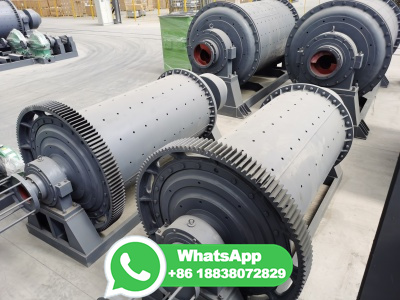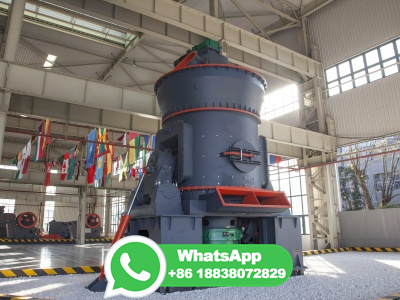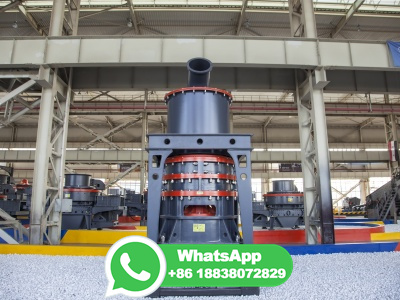Difference Between Industry And Mill
Simply complete the form below, click submit, you will get the price list and a GBM representative will contact you within one business day. Please also feel free to contact us by Online Service. ( * Denotes a required field).
 Get Price >
Get Price >What Is a Textile Factory Mill?
16/03/2021 · Textiles Mills Production Cycle. A textile mill is a manufacturing facility where different types of fibers such as yarn or fabric are produced and processed into usable products. This could be ...
 Get Price >
Get Price >Advantages of CNC Machining vs Conventional Machining
27/07/2016 · CNC machining and conventional machining aim to achieve the same end, and both start with a raw chunk of metal or plastic and shape it into a part. The most basic difference between the two is the automation of CNC versus the manual nature of conventional.
 Get Price >
Get Price >Grinding Mills and Their Types – IspatGuru
09/04/2015 · Grinding Mills and Their Types. satyendra; April 9, 2015; 1 Comment ; autogenous grinding, ball mill, grinding mills, hammer mill, rod mill, roller mill, SAG,; Grinding Mills and Their Types In various fields of the process industry, reduction of size of different materials is .
 Get Price >
Get Price >Sawmill
A sawmill (saw mill, sawmill) or lumber mill is a facility where logs are cut into sawmills use a motorized saw to cut logs lengthwise to make long pieces, and crosswise to length depending on standard or custom sizes (dimensional lumber).The "portable" sawmill is of simple operation. The log lies flat on a steel bed, and the motorized saw cuts the log horizontally along the ...
 Get Price >
Get Price >What is the difference between mill sector and powerloom ...
03/02/2016 · Mill loomage would refer to yarn consumed by mills while power and hand loomage would refer to total yarn consumed by these modes of production respectively. a. It is important for our country to keep mill sector loomage lower than power loom as the latter along with hand looms are used by small scale and cottage industries.
 Get Price >
Get Price >What Is a Textile Factory Mill?
16/03/2021 · Textiles Mills Production Cycle. A textile mill is a manufacturing facility where different types of fibers such as yarn or fabric are produced and processed into usable products. This could be ...
 Get Price >
Get Price >What Is a Textile Factory Mill?
16/03/2021 · Textiles Mills Production Cycle. A textile mill is a manufacturing facility where different types of fibers such as yarn or fabric are produced .
 Get Price >
Get Price >Milling vs Grinding: What''s the Difference?
26/02/2020 · Milling and grinding both accomplish the same goal of removing materials. The difference is the machine used to accomplish that goal. ... Milling and grinding are two common machining processes performed in the manufacturing industry. They both involve the removal of material from a workpiece, and they both support a wide variety of materials.
 Get Price >
Get Price >Horizontal vs Vertical Milling
28/04/2021 · Bed Mill: A bed mill, on the other hand, moves the material perpendicular to the bed of the mill moves along the Y and Z axes and the spindle moves along the Xaxis, providing a full, 3axis range of movement. The spindle movement, coupled together with the horizontal movement of the table enables milling of a variety of depths and shapes.
 Get Price >
Get Price >Planing vs Shaping in Manufacturing: What''s the Difference ...
11/08/2020 · The difference between shaping and planning is what part of is moving. ... 2020; Planing and shaping are two common processes performed in the manufacturing industry. Manufacturing companies rely on these processes to manipulate the size and shape of raw materials, thereby leading to the production of finished goods. ... Milling and turning ...
 Get Price >
Get Price >What Is The Difference Between Industrial Pipe and ...
17/06/2016 · What Is The Difference Between Industrial Pipe and Sanitary Tube? June 17, 2016. Pipe. Pipe is measured in Nominal Pipe Size (NPS). This is a standard set up based upon different "schedules". The term schedule refers to the wall thickness of the pipe; therefore, a higher schedule number will denote a pipe with a thicker wall and smaller ID.
 Get Price >
Get Price >what is difference between composite textile mills and ...
31/12/2011 · Enterprises in textile industry are classified into organised and unorganised sectors. The organised sector consists of composite mills and spinning composite mills are vertically integrated mills covering the full array of textile processing operations spinning, weaving, dyeing, and finishing.
 Get Price >
Get Price >Drill Press vs. Mill: Which One to Get?
27/01/2020 · The tools are designed for different operations the milling machine can perform – like cutting, facingoff, drilling, or putting in a pilot hole. On most milling machines, the table can move in the x, y, and zdirection, allowing three axes of cutting. Some milling machines even allow the head to rotate.
 Get Price >
Get Price >Top 5 productspecific milling technologies used in ...
07/07/2017 · Top 5 productspecific milling technologies used in industrial appliions. July 7, 2017. Find the best sizereduction methods for achieving the product goal. Rob Voorhees. ACM mill. All images courtesy of Hosokawa Micron International Inc.
 Get Price >
Get Price >Difference Between CNC Milling Machine and Manual Milling ...
Difference between CNC milling machine and manual milling machine • CNC milling machine are more versatile than manual milling machine. A number of jobs that are not possible with manual milling machine can be easily done with CNC mill. • In a CNC milling machine the spindle is stationary and the table can move parallel as well as to the axis of the spindle for the cutting process.
 Get Price >
Get Price >Different Types of Milling Machines
21/04/2020 · The vital difference between a plano miller and a planer is the movement of the table. In a planer, the cutting speed increases through the movement of the table, whereas in the plano miller, the table moves to give the feed. Special Type. These are unusual milling machines and perform special tasks that other milling machines don''t.
 Get Price >
Get Price >7 Different Types of Milling Machines
12/10/2021 · 7 Different Types of Milling Machines. Milling machines come in various types with a variety of functions based on certain standard specifiions. Some of the most commonly used machines are the following: column, turret, Cframe, horizontal, bed type, planerstyle, and tracer controlled. A milling machine is a tool in the metal industry that ...
 Get Price >
Get Price >Milling Machine: Parts, Types, Operations, Milling Cutter ...
12/05/2021 · Milling is the machining process in which the removal of metal takes place due to the cutting action of a rotating milling a milling machine, the cutter is rotating due to workpiece is fed against machine can hold more than one tool at a time. The cutter rotates at high speed, and because of the many cutting edges, it removes metal at a very fast rate.
 Get Price >
Get Price >What is Thread Milling
08/04/2020 · Thread milling is a metalworking process to cut threads at different sizes through the circular ramping movement of a rotating tool, the thread pitch is created by the lateral movement in one revolution. Different from tapping, thread milling is primarily applied to large workpieces.
 Get Price >
Get Price >The Differences Between , BT and HSK Tooling Tool ...
30/07/2013 · amp; BT tooling often referred to as "Vflange" by tooling manufacturers and machinists alike is the most accepted and widely used standard of conventional milling tooling in the today. The "" designation was developed by industrial conglomerate Inc. in order to standardize their machinery and has become the national standard.
 Get Price >
Get Price >Textile, Textile Product, and Apparel Manufacturing Industries
There are three individual industries covered—textile mills, textile product mills, and apparel manufacturing. Textile mills provide the raw material to make apparel and textile products. They take natural and synthetic materials, such as cotton and polyester, and transform them into fiber, yarn, and thread.
 Get Price >
Get Price >Drill Press vs. Mill: Which One to Get?
27/01/2020 · The tools are designed for different operations the milling machine can perform – like cutting, facingoff, drilling, or putting in a pilot hole. On most milling machines, the table can move in the x, y, and zdirection, allowing three axes of cutting. Some milling machines even allow the head to rotate.
 Get Price >
Get Price >Construction vs. General Industry Standards | Safety ...
Listed below are few examples that describe differences between the general industry and construction standards: Cranes: While the 1926 standard addresses requirements for crane suspended platforms, material hoists, and personnel hoists, the 1910 regulations do not include these requirements. Electrical: The 1926 standard requires ground fault ...
 Get Price >
Get Price >Construction vs. General Industry Standards | Safety ...
Listed below are few examples that describe differences between the general industry and construction standards: Cranes: While the 1926 standard addresses requirements for crane suspended platforms, material hoists, and personnel hoists, the 1910 regulations do not include these requirements. Electrical: The 1926 standard requires ground fault ...
 Get Price >
Get Price >7 Different Types of Milling Machines
12/10/2021 · 7 Different Types of Milling Machines. Milling machines come in various types with a variety of functions based on certain standard specifiions. Some of the most commonly used machines are the following: column, turret, Cframe, horizontal, bed type, planerstyle, and tracer controlled. A milling machine is a tool in the metal industry that ...
 Get Price >
Get Price >Rolling Mills: 6 Different Types of Rolling Mills [Images ...
30/09/2020 · In the rolling process, the job is drawn through a set of rolls due to interface friction, and the compressive forces reduce the thickness of the workpiece or change in its crosssectional area.. The types of rolls used in rolling mills are depended upon the shape, size and the gap between the rolls and their contour. Because of workability and limitations in equipment, rolling is done in the ...
 Get Price >
Get Price >what is difference between composite textile mills and ...
31/12/2011 · Enterprises in textile industry are classified into organised and unorganised sectors. The organised sector consists of composite mills and spinning composite mills are vertically integrated mills covering the full array of textile processing operations spinning, weaving, dyeing, and finishing.













